Manny belongs to that generation of tattooers for whom every line etched into the skin resonates as a tribute to the pioneers of traditional electric tattooing. The heir to a precious knowledge, he works with devotion to carry this legacy forward, mindful of the path paved by those who came before him.
Tattooer, collector, artist, and craftsman, he tattoos from the heart—driven by genuine passion and a deep respect for the art.
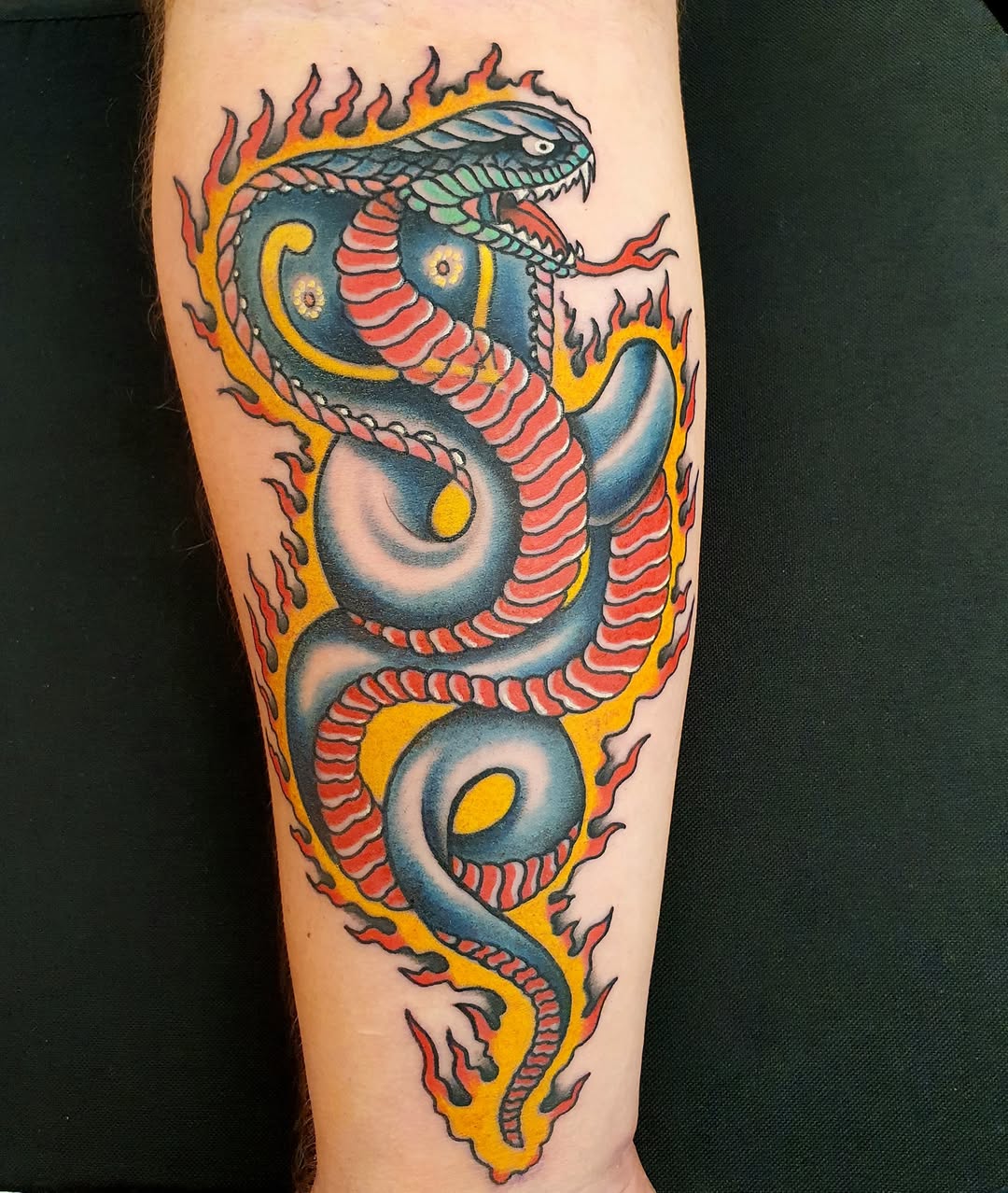
Athens’ underground scene
Born in West Germany to Greek parents, Manolis Panagiotou grew up at the crossroads of cultures, between his Hellenic roots and a daily life shaped by a contrasting urban environment. It was Liverpool tattooer Steve Crane who one day nicknamed him Manny—a name he would carry for good.
From an early age, his father passed on to him a love of drawing, encouraging him to use the pencil not only to write, but also to observe and tell the world in his own way. He vividly recalls those moments when, fascinated, he would watch his father sketch pin-ups in a style typical of the 1960s—evoking the icons popularized by Gil Elvgren. Thirty-five years later, that same father asked Manny to tattoo a rose on his arm. He remembers with emotion: “It was his very first tattoo… An incredible experience for both of us.”
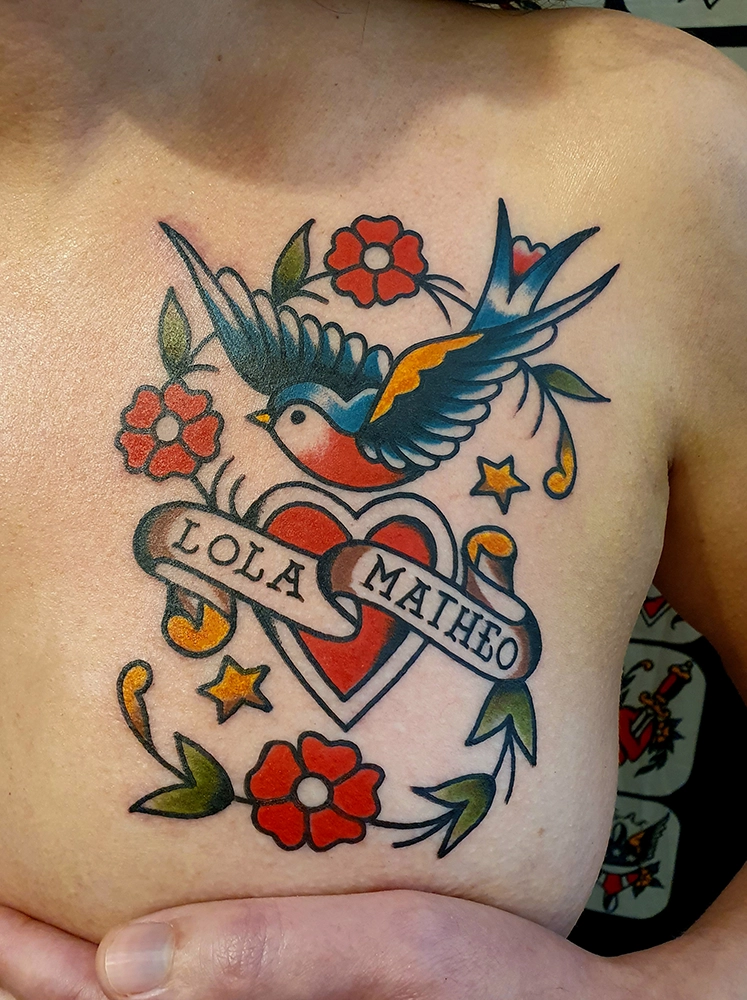
When the family moved back to Greece, it was in Athens that Manny spent his teenage years, right in the turbulence of the 1990s. A wild young adolescent, he was swept up by the raw energy of the capital, which sharpened his view of the world. “I felt like I was in a movie,” he recalls.
“Athens was a tough city, drowned in drugs, underground bars, squats, endless protests, and fragmented political movements.”
He remembers that urban mosaic where distinct music scenes coexisted: punk, skinhead, rock, metal, rockabilly, gothic, new wave, techno… “and I’m surely forgetting some!” he adds with a smile, before concluding: “It was punk culture that suited me best at that time, and I embraced it fully.”
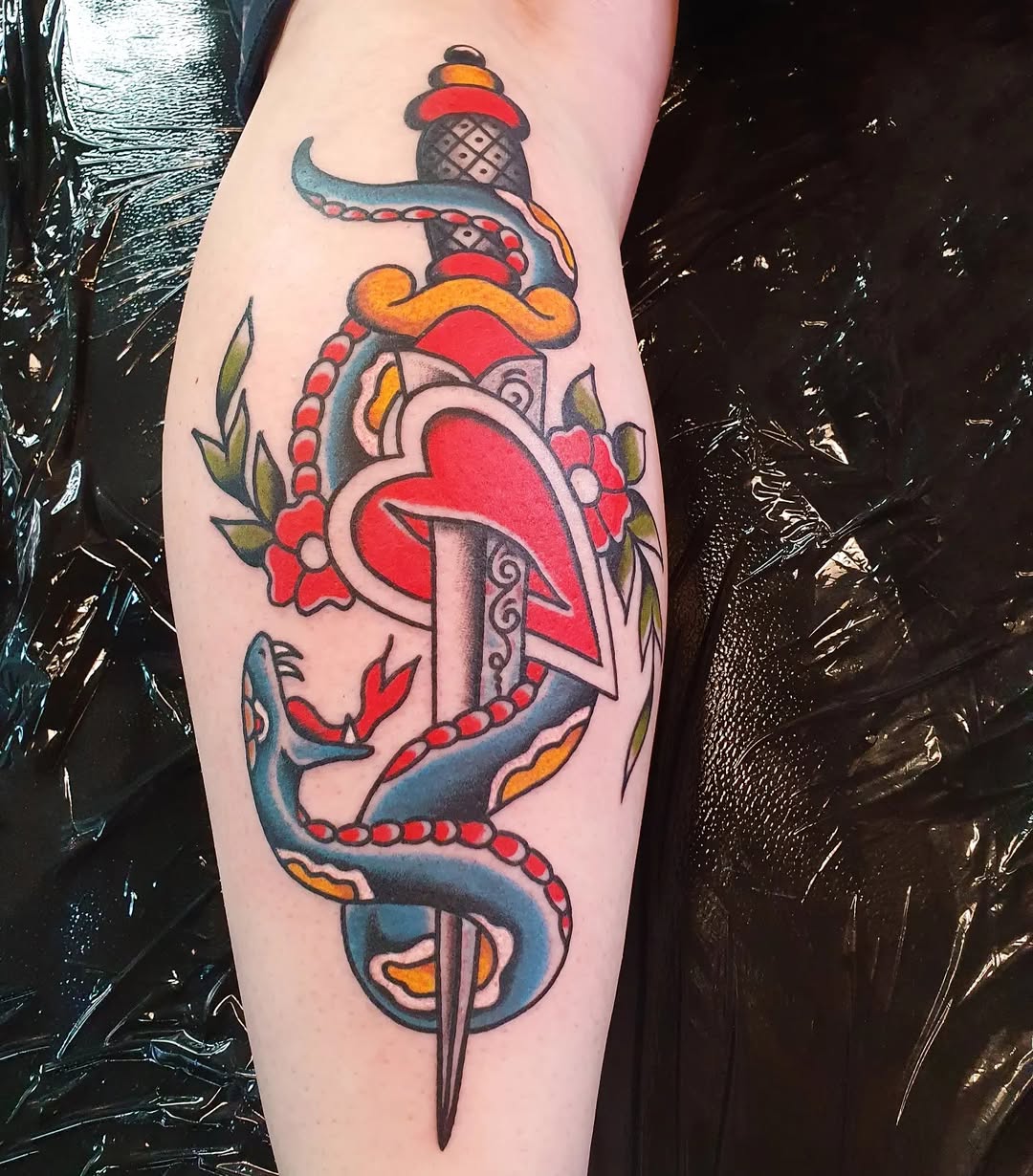
The Birth of a Tattooer
It was in Athens’ self-managed squats that Manny had a decisive encounter with Susanna. The Greek-German tattoo artist was an iconic figure in the local punk scene, respected for her unwavering commitment.
He remembers, “She was always on the front lines, whether at concerts or during confrontations.” She was the one who introduced him to tattooing. Based in the legendary Villa Amalias—“an essential spot for the entire Greek underground scene,” he notes—Susanna gave him his very first tattoo. “I was immediately mesmerized,” he recalls. “I got so hooked that I slowly started tattooing my arms, then my legs.”
She guided him, and most importantly, gave him his first real start : it was thanks to her that he got his hands on his first machines from the English manufacturer Micky Sharpz, “the best at the time.” A vocation was born—and it would never leave him.
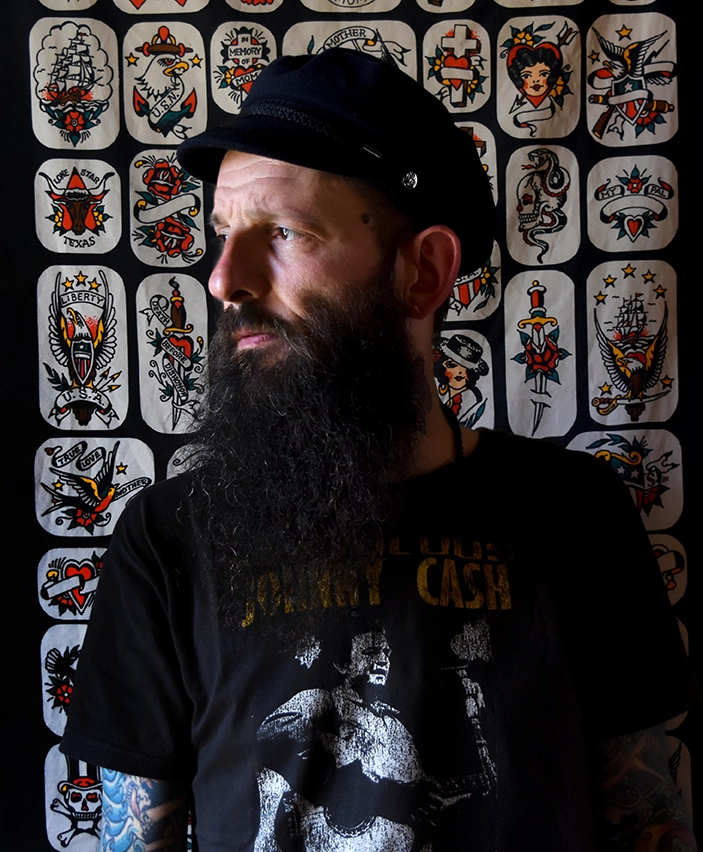
Before the Internet, when the history of tattooing was passed down only through books or by word of mouth among tattooed enthusiasts and seasoned artists, building a tattoo culture was a true personal quest.
In his early days, Manny wandered the kiosks of Athens in search of specialized magazines from abroad—must-haves for anyone wanting to enter this world. Through those pages, he discovered the pioneers of American tattooing, masters of the Japanese style, and traditions that had sometimes been forgotten.
He remembers: “There was only one kiosk, right in the city center, that carried these magazines from all over the world. You could find motorcycle magazines, tattoo magazines, music magazines… It quickly became an unlikely meeting place for enthusiasts. Strong friendships were formed there, and they still last today.”

The Black Rose Studio
At that time, working as a tattooer in Greece required a radical life choice, far from established norms. The country, still relatively cut off from the rest of the world, offered little space for this form of body expression. Manny recalls: “In the late ’70s and early ’80s, the legendary Jimmy ran the city’s only shop. His prices were out of reach for most people. Most tattoos were therefore done in private apartments or squats.”
It wasn’t until the turn of the 2000s that body art slowly began to gain wider acceptance. At that point, there were only five or six studios in the entire country. Manny finally decided to take the leap and professionalize, becoming both a tattooer and a piercer. With piercing booming, it provided a significant source of income. Drawing on his experience, in 2005 he opened Black Rose in the heart of Athens, at the foot of the Acropolis.

Black Rose is much more than just a tattoo shop: it is a true sanctuary of freedom, creativity, and transmission. Manny devotes himself to it body and soul, driven by the desire to share his world and his knowledge. For him, tattooing goes far beyond aesthetics: it is a way of being and of thinking about the world—a visual and symbolic language nourished by music and philosophy.
Proud of his Hellenic roots, he introduces visitors to Rebetiko, a popular Greek music genre from the early 20th century. Long suppressed by the colonels’ regime for its supposedly subversive lyrics, this melancholic and authentic style is, in his eyes, the sonic equivalent of traditional electric tattooing: raw, spontaneous, and free, a form of expression born on the margins.
Manny reflects: “Athens is one of the oldest cities in the world, the cradle of philosophy and democracy. For about twenty years, this beautiful, eclectic city was my home. I tattooed people from all walks of life there, exchanging ideas, experiences, music, and philosophies.”

Around 2012–2013, driven by his passion for craftsmanship and fine mechanics, he began producing handmade tattoo machines, cables, and pedals. Together with his friend and partner, he founded Black Cat Bone, a small independent company dedicated to precision craftsmanship.
Discovering the Pioneers of Tattooing
After several years at the helm of his studio, Manny feels the need to venture beyond the borders of the City of Gods. In his constant search for new experiences, the tattoo artist sees travel as a way to reinvent himself. "Travel has always played a key role in my life," he confides.
"It has enriched my knowledge, helped me forge strong human connections, and broadened my understanding of this art form."
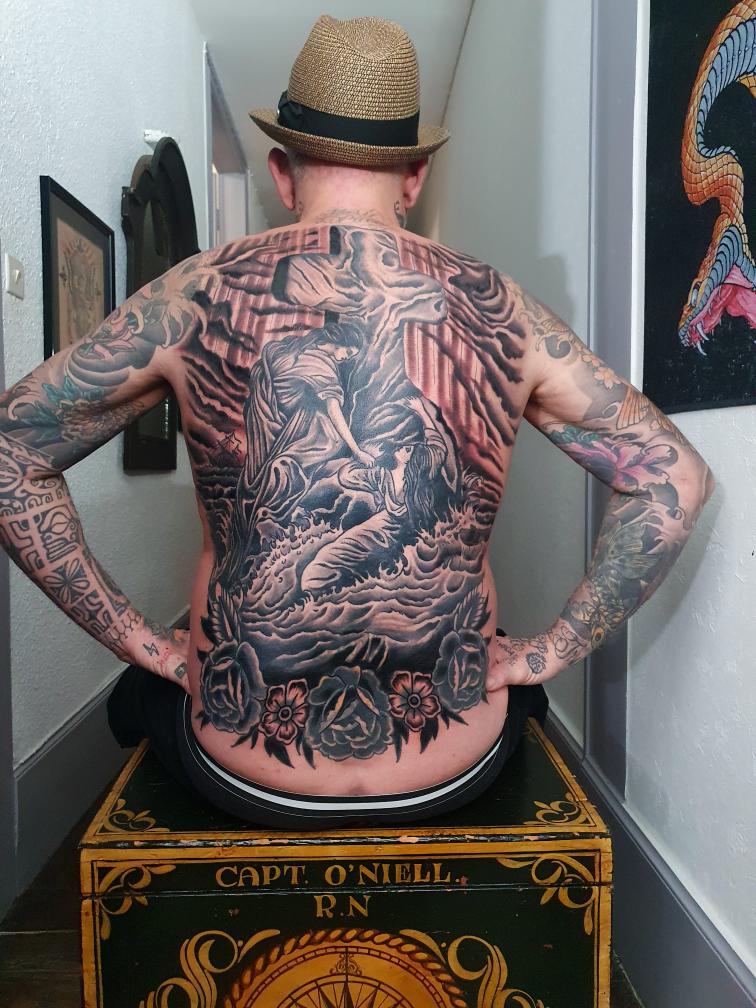
Throughout his journeys, Manny delves into the work of the pioneers of traditional electric tattooing. In Istanbul, he meets Danny Garcia: "We became really good friends. He founded the legendary Inkstanbul Artcore, one of the most underground shops I’ve ever seen. What happens at Artcore stays at Artcore! » Danny introduces him to his collection of American tattoo machines and encourages him to start building his own. Woods, from the Hollyghost studio in Luxembourg, lets him tattoo using rare machines by Paul Rogers, Sailor Jerry, Owen Jensen, and Charlie Wagner. The artist absorbs the mechanics of these tools, which in turn feed into his own designs.

Shanghai Kate Hellenbrand, trained by Sailor Jerry and close to Ed Hardy and Mike Malone, offers him her advice and gifts him some of her drawings. In Jerusalem, he is welcomed by Wassim Razzouk, heir to a 700-year-old tattooing lineage. Manny has the rare opportunity to handle the traditional wooden stamps passed down through 27 generations, each one carrying sacred symbolism.
He later forms a friendship with Ernie Carafa, former associate of Paul Rogers, who gives him original tattoo flash and acetate stencils. "That period was crucial," Manny explains. "I was fully focused on studying the old masters, aiming to faithfully reproduce their original designs. I was fortunate enough to stay close to Ernie until his very last days."
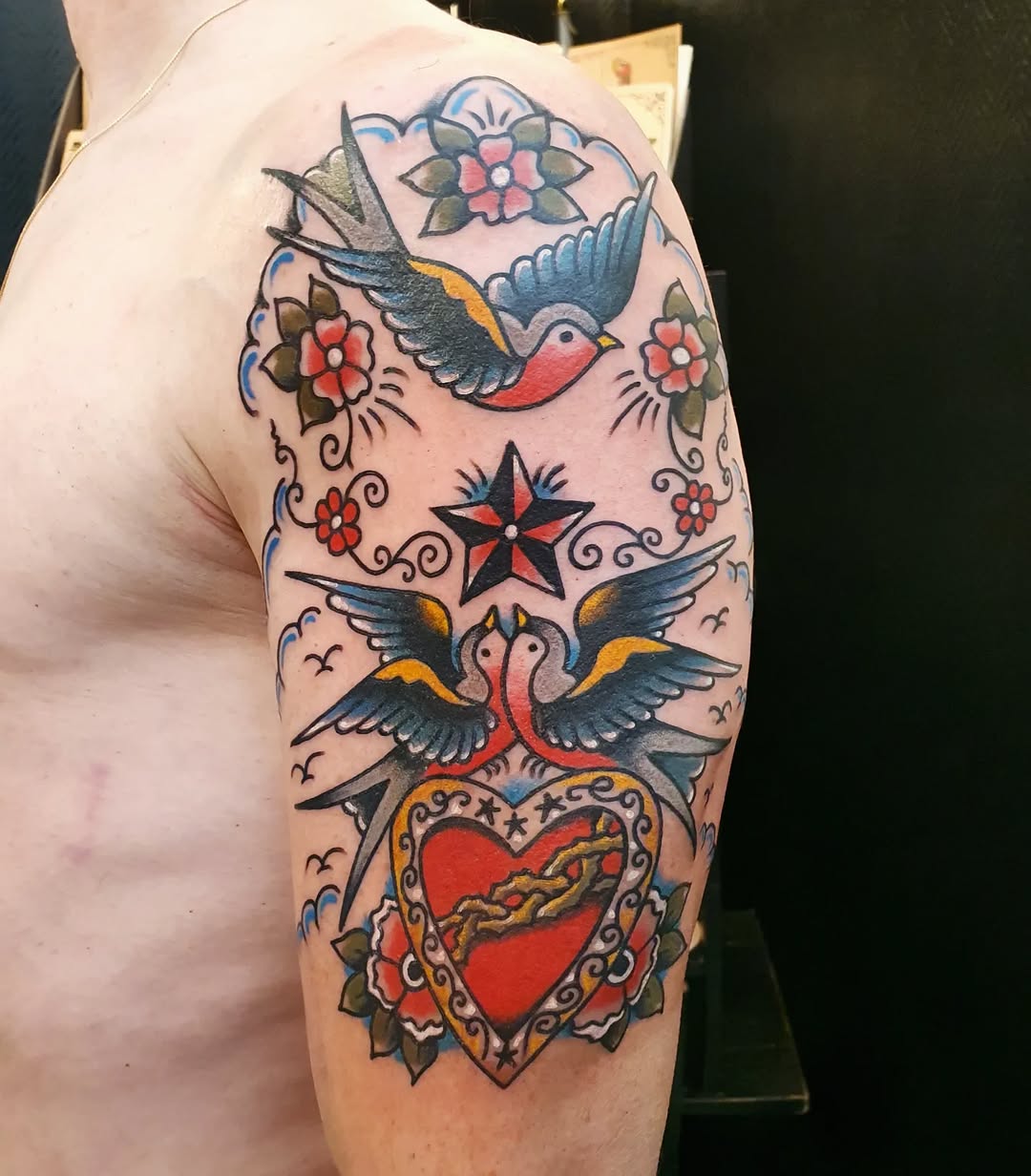
Other pivotal encounters mark Manny’s path as he tirelessly continues his pursuit of knowledge. Carmen Nyssen, historian and niece of Bert Grimm, shares her expertise with him and introduces him to archival research. Charlene Gibbons, daughter of Artoria and Red Gibbons, also offers him valuable advice.
William Robinson, founder of the World’s Biggest Tattoo Museum, grants him access to his exceptional collections — antique machines, rare photographs, and invaluable archives — all treasures that deepen Manny’s understanding of tattoo traditions. Guided by a patient and rigorous approach, nourished by the study of the great masters, Manny manages to forge an artistic identity deeply rooted in tradition.
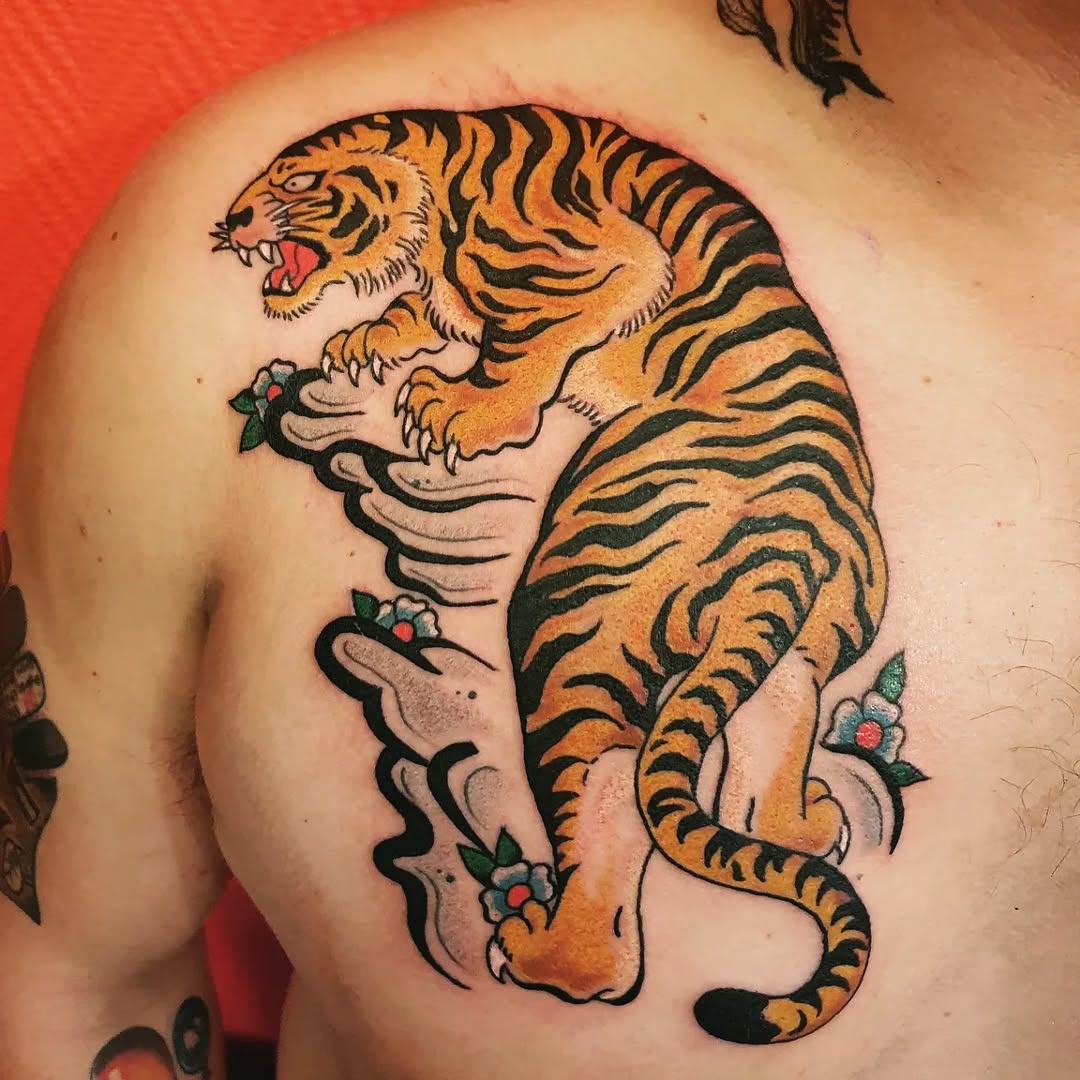
He fully embraces his influences: “Doc King and Amund Dietzel remain my major references. They worked together in the 1920s and created a unique style that defined their era.” Among his sources of inspiration, one figure stands out with particular force: Sailor Jerry."
“He revolutionized old-school tattooing. Through his techniques, bold ideas, and international connections, he brought a striking sense of modernity to the style.”
Manny also pays tribute to other key figures who shaped the history of traditional electric tattooing: Ed Hardy, whose career brought the art unprecedented recognition; Mike Malone, Pinky Yun, Brooklyn Joe Lieber, Cap Coleman, Christian Warlich, Huck Spaulding, Paul Rogers... pioneers he regards as masters, each in their own way.
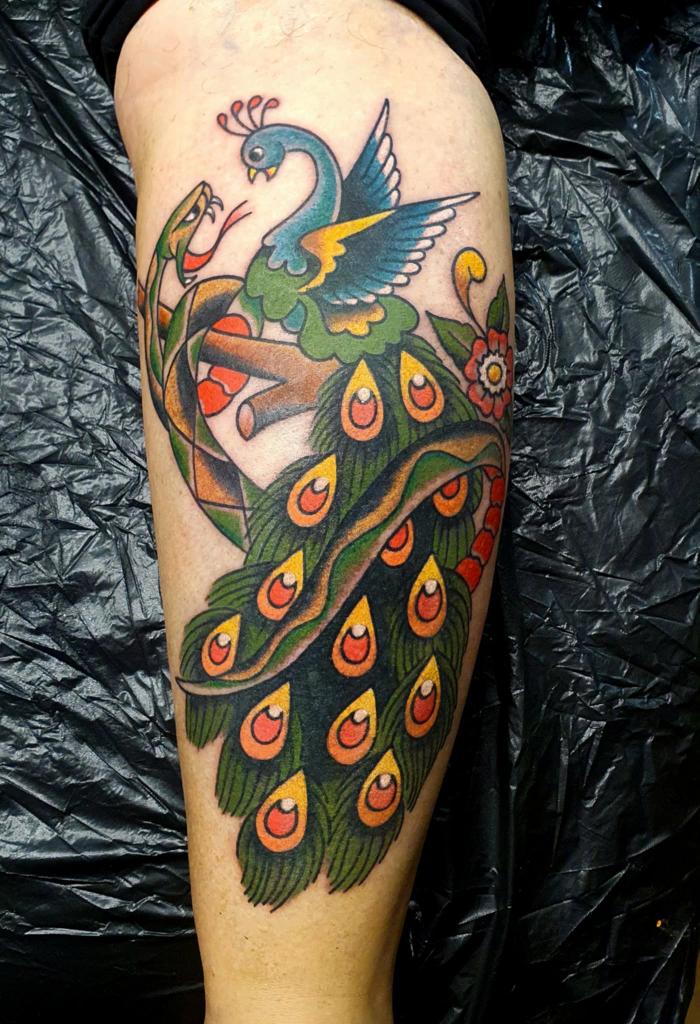
The Tattoo Farm Project
Based in the southwest of France since 2018, Manny continues his journey with the same high standards and unwavering commitment to his principles. He still draws all his flash sheets by hand and tattoos with machines he builds himself. "I keep the flame alive," he says. "Being a tattooer requires a holistic vision. Only time can truly judge the value of such an approach." Together with his partner Athina, he regularly takes part in festivals and conventions."
Over time, he’s noticed a shift : "At many festivals, I see the spirit of tattooing gradually fading. Fortunately, some events still hold the line — like the one in Mont-de-Marsan. More intimate and more committed, it stands out for its genuine artistic approach and fosters real connections between artists and visitors."
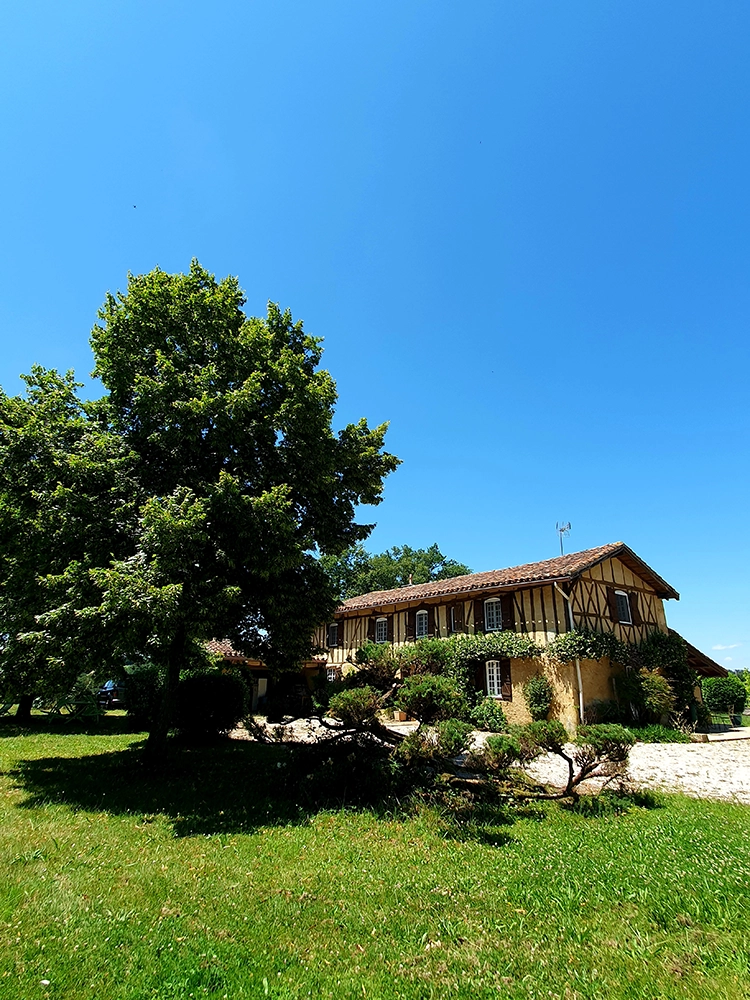
Clear-sighted, Manny observes the changes in the tattoo world with a critical eye. He laments the effects of overexposure, social media, and growing standardization, which he believes have weakened the depth of the craft.
"I'm not against evolution — far from it. But we have to stay vigilant. Sometimes we lose the meaning, the memory, the techniques and the values that are the foundation of this art."
For Manny, the responsibility of passing things on is essential. In a world where five years of practice are enough to label someone a "veteran," he believes it's more crucial than ever to share strong principles with the younger generations — principles rooted in respect, commitment, and the memory of the trade.
Over time, Manny has built a multifaceted body of work : tattooer, historian, craftsman, and transmitter of knowledge — he embodies a rare figure at the crossroads of practice and memory. Staying true to this vision, he has developed a unique project : The Tattoo Farm Project. On their land overlooking the Pyrenees, Manny and his wife Athina aim to welcome clients in a simple, warm setting — far from the urban frenzy. The idea : to offer immersive stays centered around tattooing, blending music, casual gatherings, conversations, unique tattoos, and handmade objects.
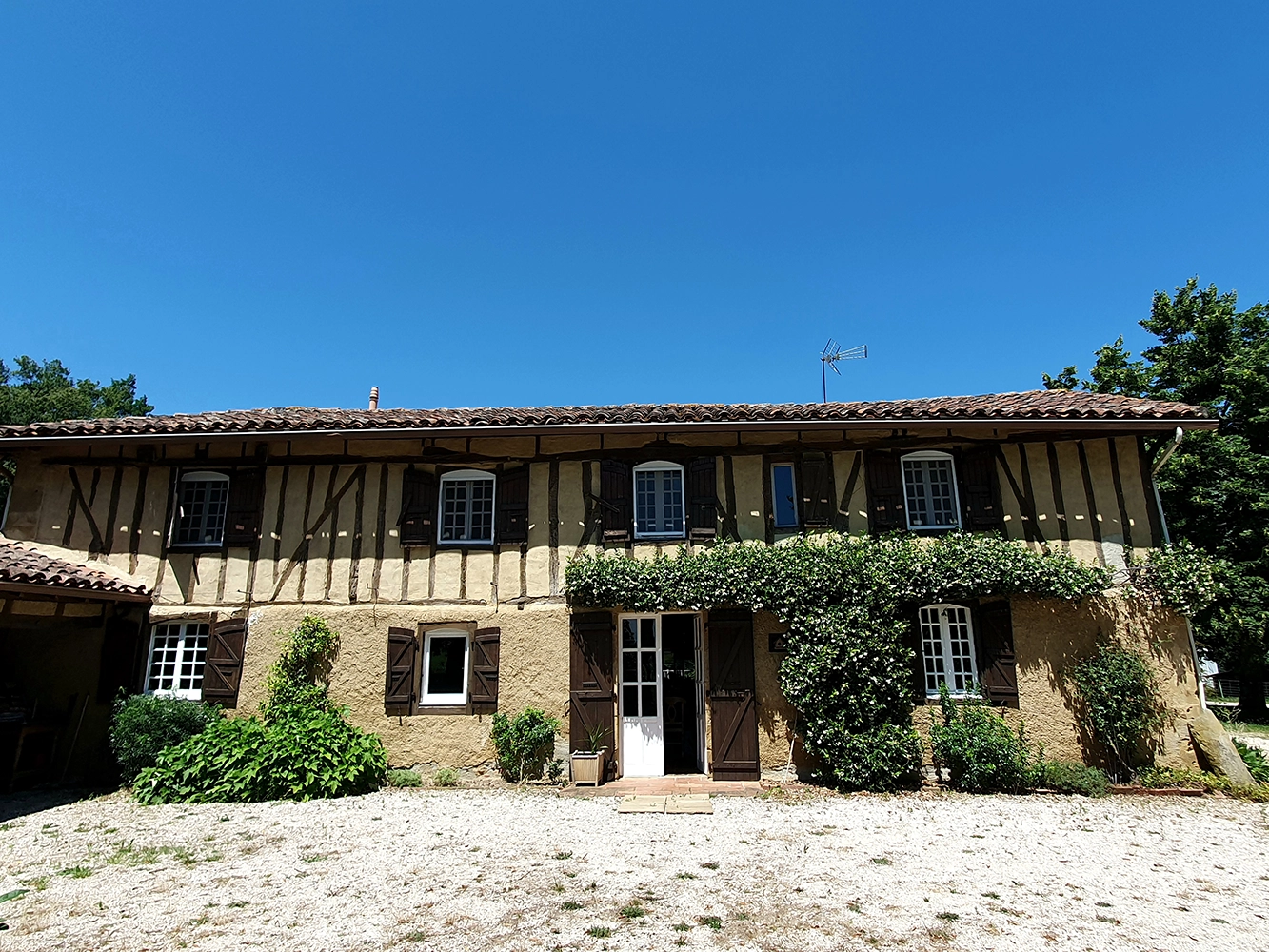
Clients will have the chance to choose historical designs from Manny’s personal collection (dating from 1860 to the present day), and leave with original illustrations, drawings, or handcrafted items. The goal is clear : to restore connection, give substance to the tattoo experience, and move beyond a purely aesthetic service to offer a moment of sharing and creation — rooted in both history and human warmth.
To conclude, Manny is keen to recall the etymology of the word tradition, from the Greek : “one who transmits customs and practices” — like a musician who doesn’t merely play the notes, but also embodies the soul of the piece. Likewise, according to Manny, a traditional tattooer doesn’t just reproduce a style — they carry its living memory.
We would like to thank the author of this material, Alexandra Bay — photographer, writer, and researcher of tattoo culture, who has been documenting and telling the stories of people devoted to this art since 1995.


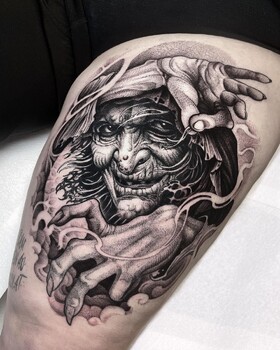
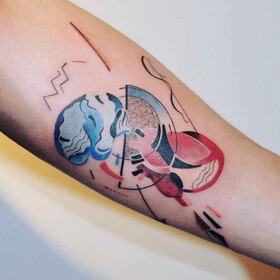
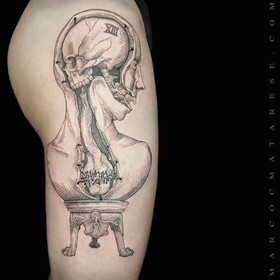

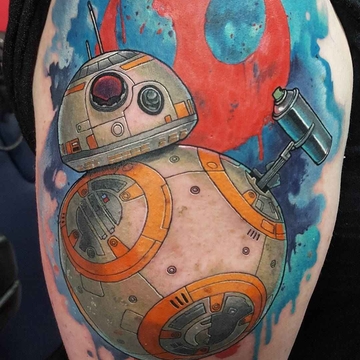
Comments (0)